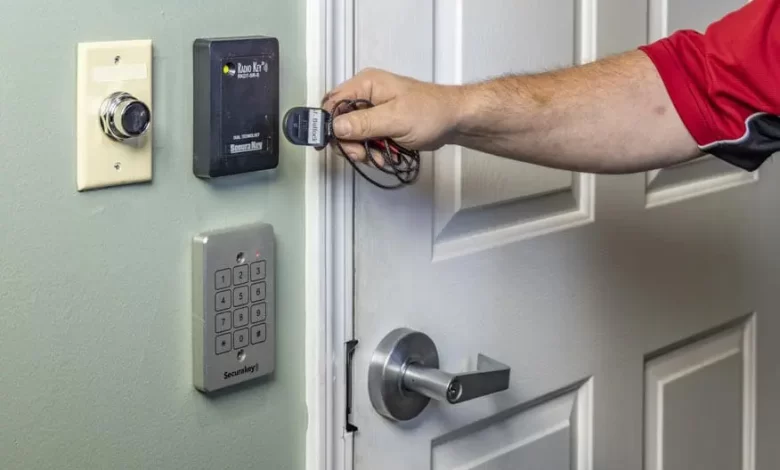
When dealing with detention security systems, reliability is non-negotiable. A single failure could lead to serious safety concerns, making it essential to have robust fail-safe measures in place. These measures ensure the systems operate seamlessly under any circumstance, providing the security and control needed to maintain order.
Redundant Power Systems to Ensure Continuous Operation
Power disruptions can compromise the effectiveness of detention security systems, but redundant power setups ensure they keep running no matter what. Secondary power sources, such as backup generators or uninterruptible power supplies, kick in immediately when the primary source fails. This seamless switch prevents downtime and keeps critical functions operational.
In addition to providing continuous power, these systems undergo regular testing to ensure they’re ready when needed. A robust power redundancy plan considers worst-case scenarios, such as extended outages or equipment failures. By prioritizing these fail-safes, detention facilities can maintain uninterrupted operations, even in the most challenging situations.
Secure Backup Communication Channels for Emergency Coordination
Effective communication is vital in emergency situations, particularly in detention facilities. Backup communication channels provide an alternative way to coordinate responses when primary systems fail. These channels often include secure radio networks, satellite phones, or dedicated emergency lines, ensuring there’s always a way to relay critical information.
A reliable backup system is designed with both security and accessibility in mind. It safeguards sensitive information while making it easy for authorized personnel to communicate. With redundant communication channels in place, detention facilities can handle emergencies more effectively, minimizing confusion and maintaining control.
Automated Alerts for Immediate Response to System Failures
Detention security systems are only as effective as their ability to signal problems quickly. Automated alerts play a crucial role in ensuring a rapid response when something goes wrong. These alerts notify personnel immediately about malfunctions, breaches, or other issues, enabling them to act without delay.
These systems can be customized to prioritize certain types of failures, ensuring that the most critical issues get attention first. Automated alerts integrate with other monitoring tools, providing a clear picture of the situation and guiding corrective action. This proactive approach helps facilities address problems before they escalate.
Rigorous Testing Protocols to Identify Potential Vulnerabilities
Regular testing is the cornerstone of any reliable detention security system. Rigorous protocols help identify weaknesses before they can cause significant problems. These tests simulate real-world scenarios to assess how systems perform under stress, highlighting areas that need improvement.
Testing includes both software and hardware components, ensuring all elements work together as intended. It also evaluates how quickly the system recovers from simulated failures. By addressing vulnerabilities through thorough testing, detention facilities can bolster their systems and reduce the risk of unexpected issues.
Physical Overrides for Manual Control During Technical Malfunctions
Even the most advanced security systems need a fallback option. Physical overrides allow personnel to take manual control when technical issues arise. These controls are designed to be intuitive and reliable, ensuring that staff can operate them quickly during emergencies.
Manual systems are particularly valuable in situations where electronic systems fail entirely. They provide an additional layer of security, enabling critical functions like locking doors or managing access points without relying on automated systems. By incorporating physical overrides, detention facilities add an extra safeguard to their operations.
Real-Time Monitoring Systems to Detect Anomalies Instantly
Real-time monitoring is an essential feature of any robust detention security system. These tools track activity and detect irregularities, such as unauthorized access or system malfunctions, the moment they occur. Instant detection enables facilities to respond faster and mitigate potential threats effectively.
Monitoring systems often include advanced analytics and visual interfaces that make it easy to interpret data. They provide actionable insights, helping personnel understand the scope and severity of an issue. With real-time monitoring, detention facilities can maintain a high level of awareness and address problems as soon as they arise.
Preventive Maintenance Schedules to Minimize Unexpected Downtime
Regular maintenance is key to keeping detention security systems running smoothly. Preventive schedules ensure that every component—whether mechanical or digital—gets the attention it needs to stay in top condition. This proactive care minimizes the risk of breakdowns and extends the lifespan of equipment.
Maintenance plans often include inspections, software updates, and hardware replacements. By staying ahead of potential issues, facilities can avoid costly repairs and prevent system failures. A well-maintained security system is not only more reliable but also more cost-effective in the long run.